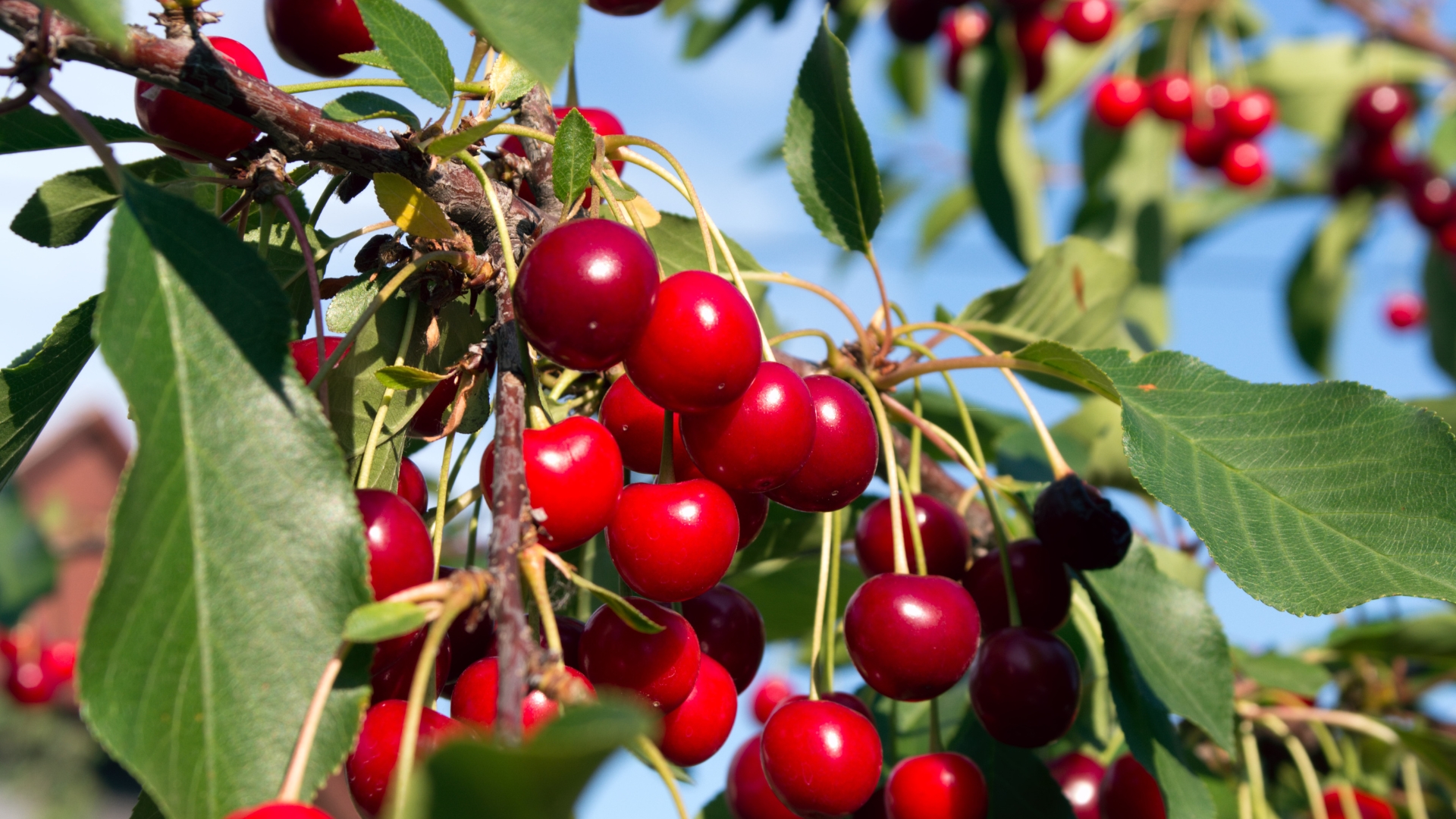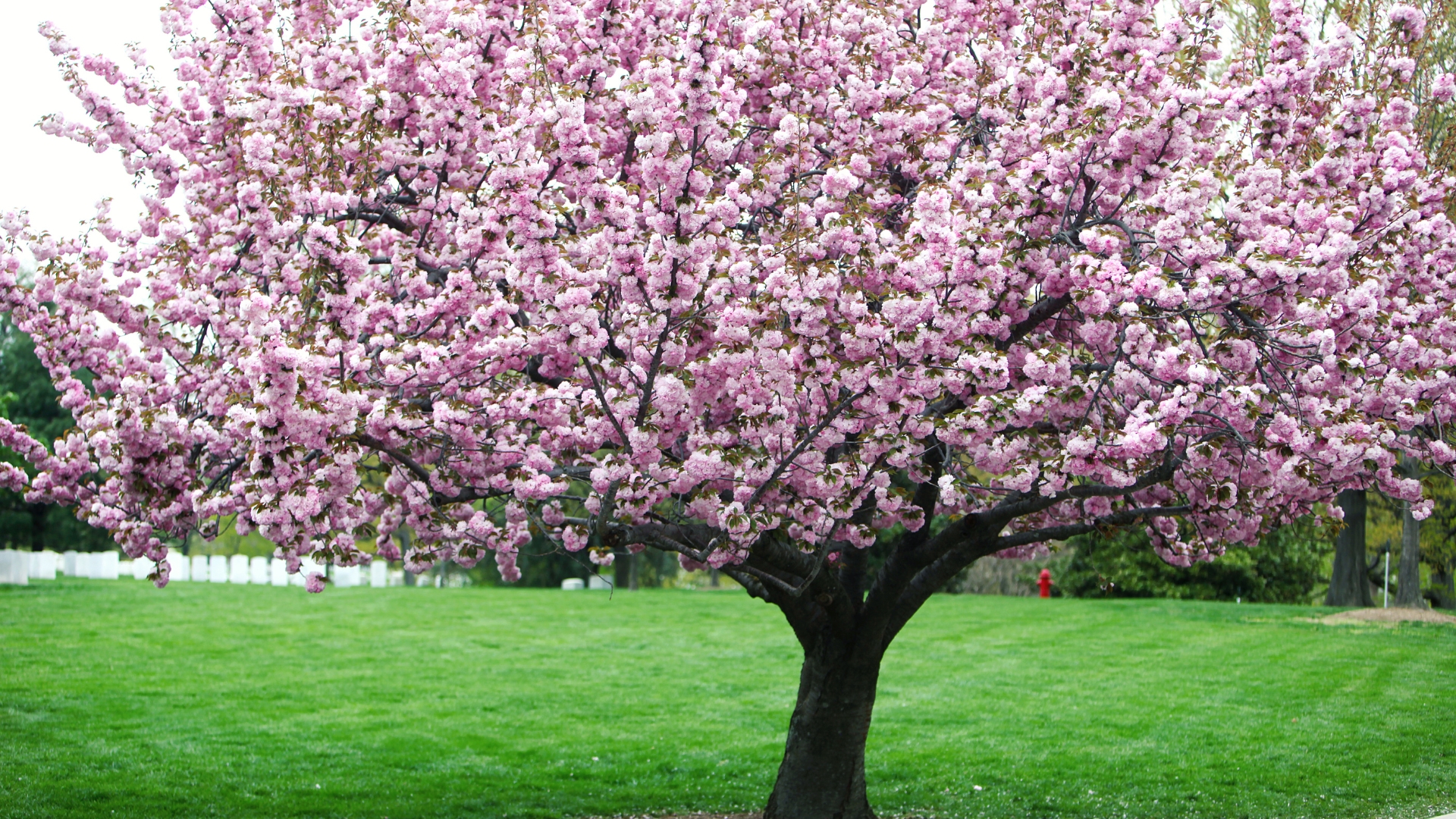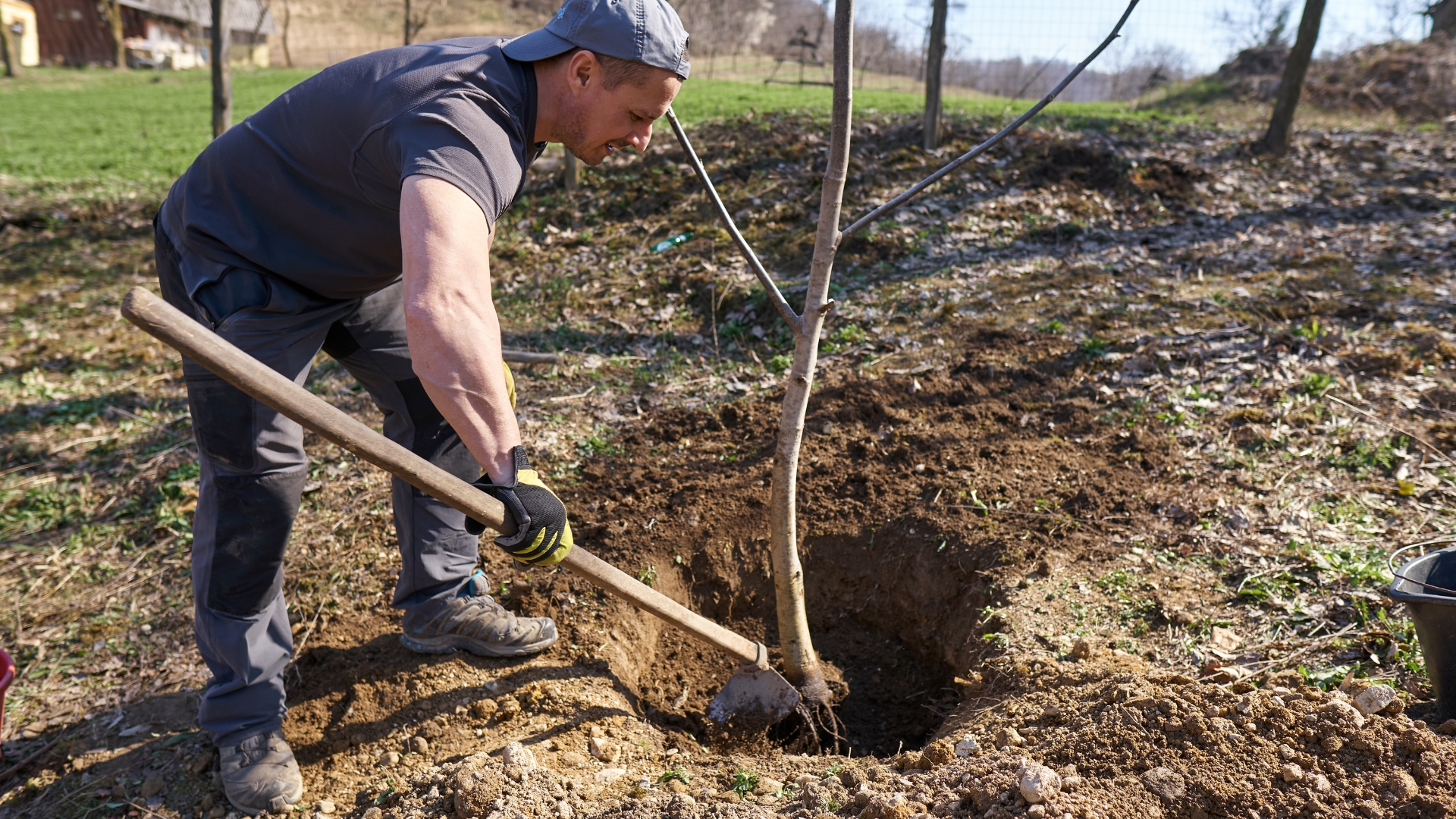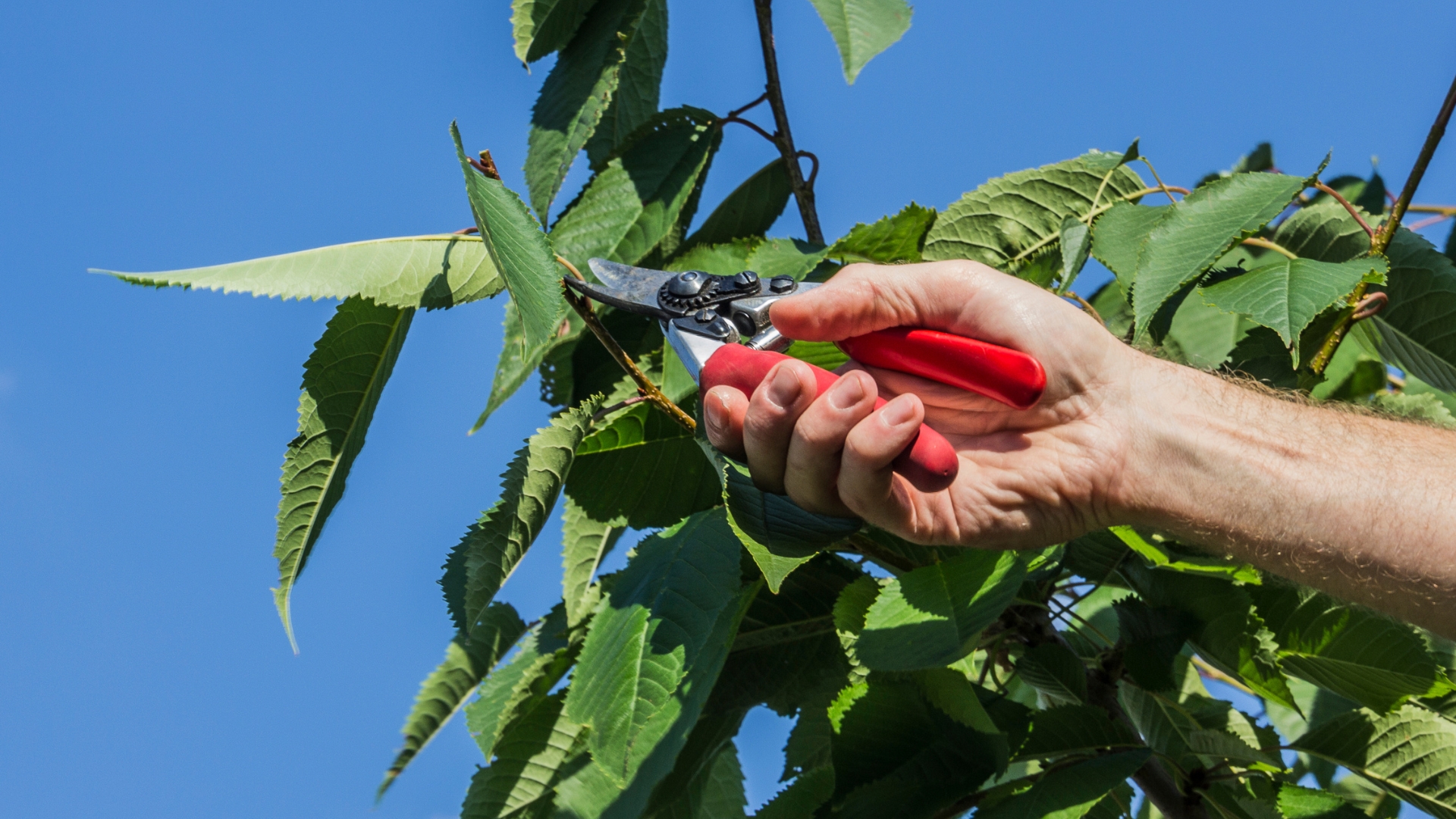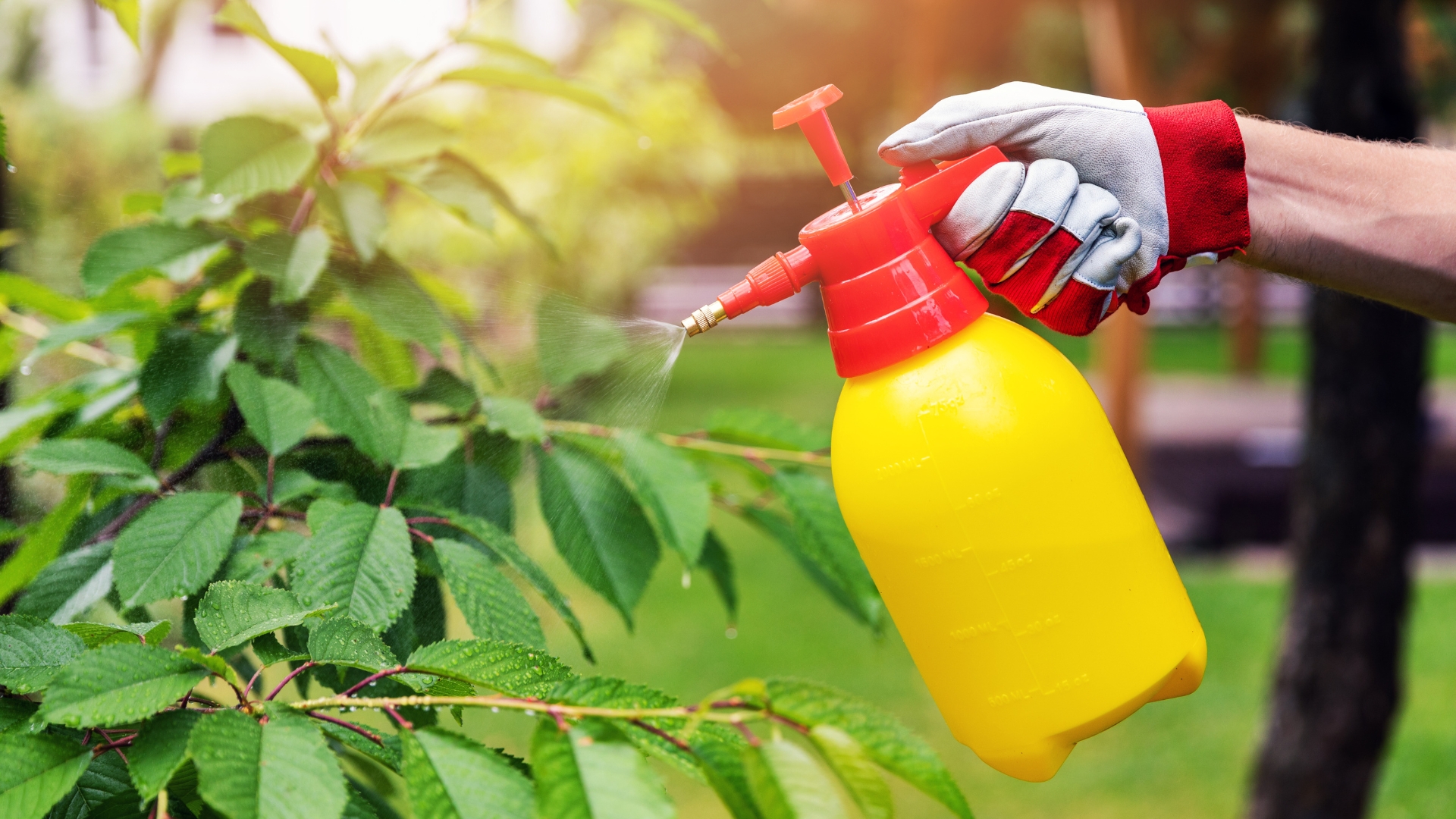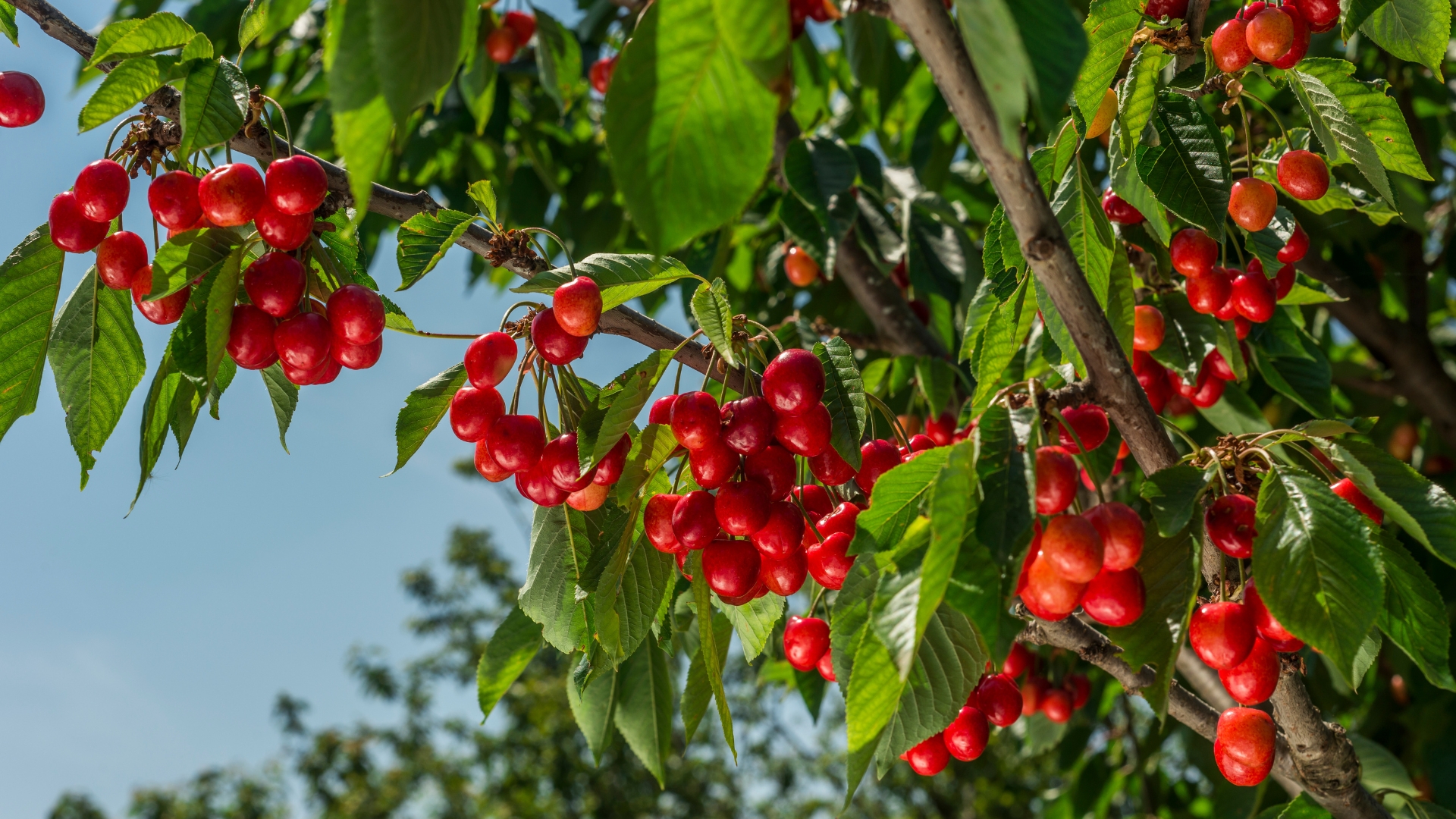Cherry trees bring springtime magic with their blossoms and summer bliss with their harvest.
But getting them to thrive? That takes some know-how. I’m here to share the real-deal gardening tips – no fluff, just the proven techniques that make the difference between a struggling tree and a backyard legend.
Are you ready to grow the most delicious, sun-ripened cherries right in your own backyard? Here’s what you need to know to make it happen.
First, Select The Variety
The cherry tree you plant today determines the harvest you’ll enjoy for years to come.
Sweet or tart, self-pollinating or needing a partner – there’s a variety for every garden. ‘Bing’ and ‘Rainier’ are favorites for fresh eating, while ‘Montmorency’ delivers a perfect balance of tartness for baking.
But here’s the catch – most sweet cherries need a pollinator to set fruit. If space is tight, a self-pollinating variety like ‘Stella’ ensures you still get a solid harvest.
Your climate plays a huge role in what will thrive. Cherries love a winter chill, but if you’re in a mild zone, look for low-chill options like ‘Minnie Royal’ and ‘Royal Lee.’
Small yard? Go for a dwarf variety that fits in a pot or corner of your garden. The right choice now means less hassle later, so consider your space, climate, and how you plan to enjoy your cherries before planting.
How To Plant A Cherry Tree
Cherry trees need a sunny, well-ventilated spot where they get at least six hours of direct sunlight. Soil should be rich and well-draining – standing water is a quick way to ruin roots.
If your soil is heavy, amend it with organic matter or plant in a raised bed to improve drainage. Avoid low-lying areas where cold air can settle and damage spring blossoms.
Dig a hole about twice as wide as the root ball, keeping the depth just right – planting too deep can smother the roots.
Spread the roots gently in the hole and backfill with soil, pressing lightly to eliminate air pockets.
Give it a deep watering right away, then top with mulch to retain moisture.
Here Are The Tips To Make It Thrive
Deep, consistent watering is key, especially in the first few years. Instead of frequent shallow watering, soak the soil deeply once a week to encourage strong root growth.
During hot spells, bump up the watering, but avoid waterlogging the roots. Mulching around the base helps retain moisture while keeping weeds at bay – just keep it a few inches away from the trunk to prevent rot.
A balanced fertilizer in early spring gives your tree the nutrients it needs to power through the growing season.
Avoid overdoing nitrogen, or you’ll get a lot of leaves and not enough fruit. When it comes to pruning, timing is everything – trim in late winter to remove dead or weak branches, opening up airflow and sunlight for healthier growth.
Keep the center open, and your tree will be stronger, more productive, and less prone to disease.
Inspect Regularly For Pests And Diseases
Pests and diseases can take down a cherry tree fast if you’re not paying attention. Check leaves, branches, and fruit regularly for warning signs like holes, curling leaves, or sticky sap.
Aphids, spider mites, and borers can quietly weaken your tree before you even notice. If you see clusters of bugs, a blast of water or neem oil spray can help control the problem before it spreads.
Fungal issues like brown rot and leaf spot are just as sneaky. They thrive in humid, crowded conditions, so pruning for airflow and avoiding overhead watering can prevent outbreaks.
If you spot dark spots or fuzzy mold on leaves or fruit, remove affected areas immediately. A fungicide spray may be needed for severe cases, but good maintenance – like keeping the area around the tree clean – goes a long way in preventing problems.
How Long Does It Take For A Cherry Tree To Bear Fruits?
If you’ve planted a cherry tree and are eagerly waiting for fruit, here’s what you need to know.
Standard cherry trees take their time, typically producing their first cherries 4 to 7 years after planting. Tart varieties tend to be a bit faster, often fruiting in 3 to 5 years.
If you’re looking for a quicker payoff, dwarf cherry trees can start producing in just 2 to 3 years.
But growth rates vary depending on the variety, climate, and how well the tree is cared for.
Consistent watering, proper fertilization, and good pruning habits all encourage earlier fruiting. Overfeeding with nitrogen leads to excess foliage instead of cherries, so use a balanced fertilizer in early spring.
And if your variety needs a pollination partner, planting the right companion tree is essential for a successful harvest.
With the right care, your cherry tree will reward you with stunning blooms, lush growth, and a harvest that’s worth the wait.
Give it the attention it needs, and before you know it, you’ll be plucking sweet, sun-ripened cherries straight from your own backyard!

